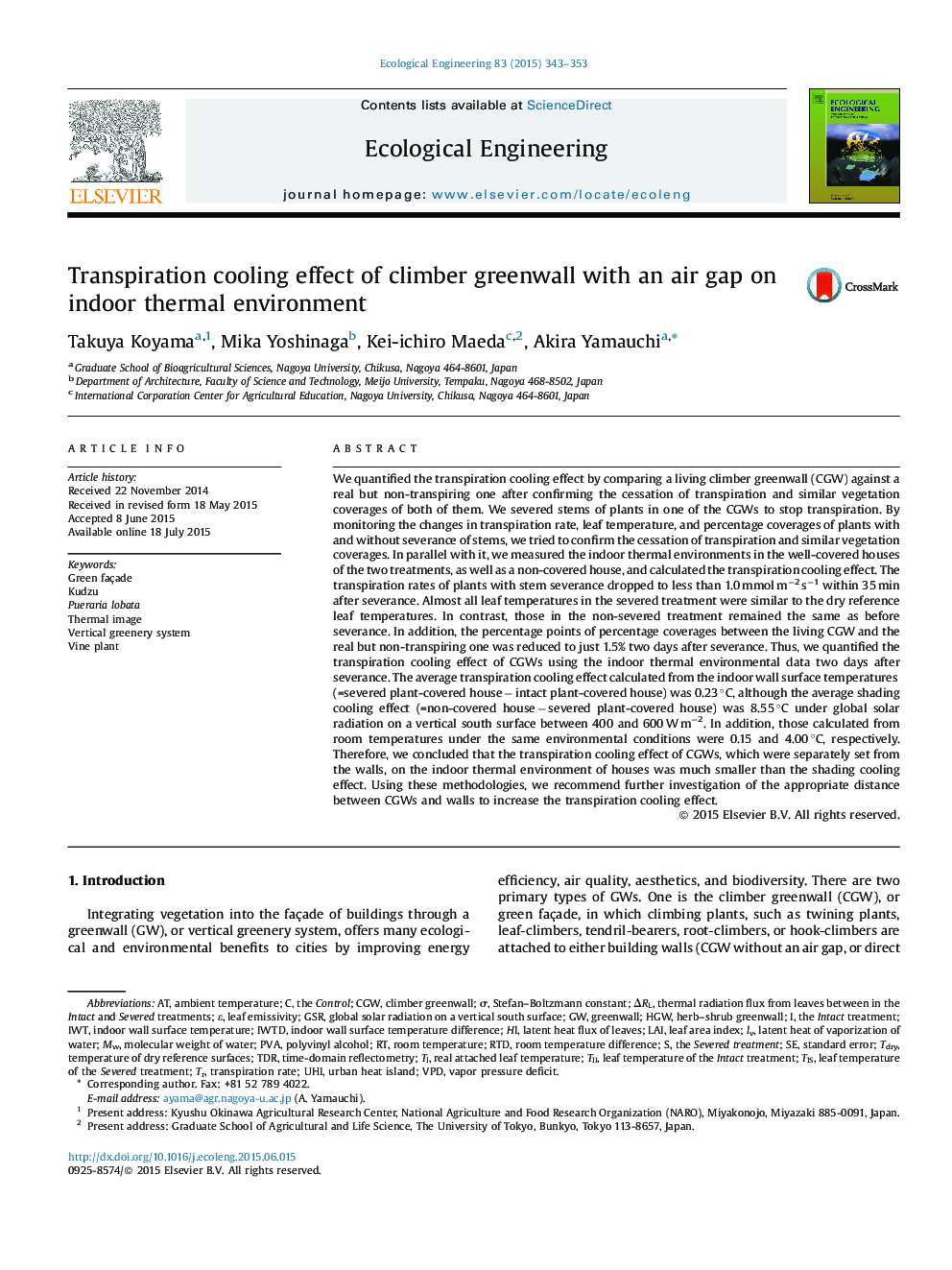| کد مقاله | کد نشریه | سال انتشار | مقاله انگلیسی | نسخه تمام متن |
|---|---|---|---|---|
| 4388884 | 1618016 | 2015 | 11 صفحه PDF | دانلود رایگان |

• We compared a living climber greenwall against a real but non-transpiring one.
• We monitored physiological and developmental statuses of plants in a non-destructive way.
• Leaf temperature of living plants was around 6 °C lower than that of non-transpiring one.
• Highest contribution of transpiration cooling effect to overall cooling effect was 9.7%.
We quantified the transpiration cooling effect by comparing a living climber greenwall (CGW) against a real but non-transpiring one after confirming the cessation of transpiration and similar vegetation coverages of both of them. We severed stems of plants in one of the CGWs to stop transpiration. By monitoring the changes in transpiration rate, leaf temperature, and percentage coverages of plants with and without severance of stems, we tried to confirm the cessation of transpiration and similar vegetation coverages. In parallel with it, we measured the indoor thermal environments in the well-covered houses of the two treatments, as well as a non-covered house, and calculated the transpiration cooling effect. The transpiration rates of plants with stem severance dropped to less than 1.0 mmol m−2 s−1 within 35 min after severance. Almost all leaf temperatures in the severed treatment were similar to the dry reference leaf temperatures. In contrast, those in the non-severed treatment remained the same as before severance. In addition, the percentage points of percentage coverages between the living CGW and the real but non-transpiring one was reduced to just 1.5% two days after severance. Thus, we quantified the transpiration cooling effect of CGWs using the indoor thermal environmental data two days after severance. The average transpiration cooling effect calculated from the indoor wall surface temperatures (=severed plant-covered house − intact plant-covered house) was 0.23 °C, although the average shading cooling effect (=non-covered house − severed plant-covered house) was 8.55 °C under global solar radiation on a vertical south surface between 400 and 600 W m−2. In addition, those calculated from room temperatures under the same environmental conditions were 0.15 and 4.00 °C, respectively. Therefore, we concluded that the transpiration cooling effect of CGWs, which were separately set from the walls, on the indoor thermal environment of houses was much smaller than the shading cooling effect. Using these methodologies, we recommend further investigation of the appropriate distance between CGWs and walls to increase the transpiration cooling effect.
Journal: Ecological Engineering - Volume 83, October 2015, Pages 343–353